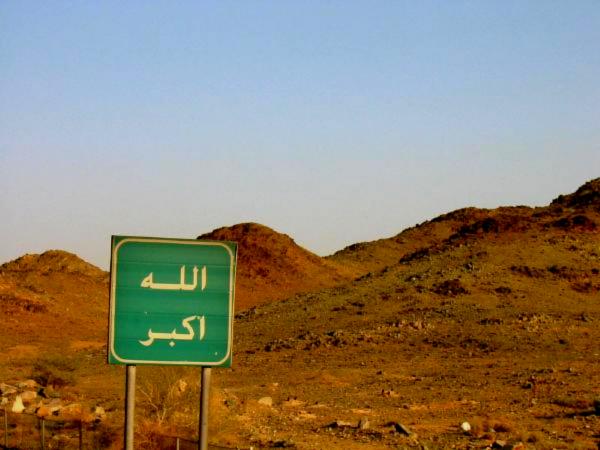
I had, by chance, heard from my ex-pat friends of a Natural Society which organises camping trips and hikes into the desert, and even to the mountains in the more remote parts of KSA. For technical reasons, societies like these are usually only open to foreigners. So one Friday I joined their program manager, a very very nice man called Kamal (who also seems to know half of the United Nations), when he was on his way to the desert for a short ride. Kamal later became my second "guardian angel" in the KSA, and a very dear friend. But as you will see here, the beginning of our friendship was a bit... stuck.
Here, on our way to the desert, one of the many religious signs along the road.

The first soft dunes.
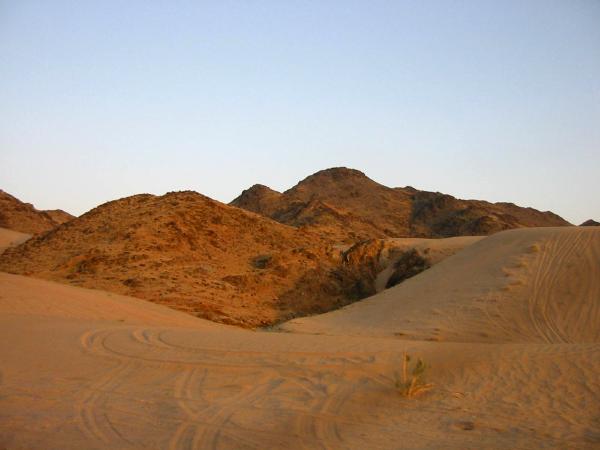
And finally some ripples in the sand.
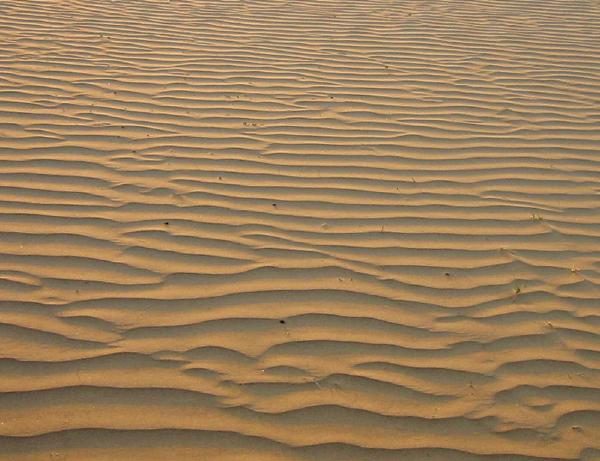
Many people keep their camels on the outskirts of Jeddah, and visit them once a week. I didn't quite understand what these camels eat and drink, but they seemed happy. Anyway, to me camels always seem to be smiling. I really like them.
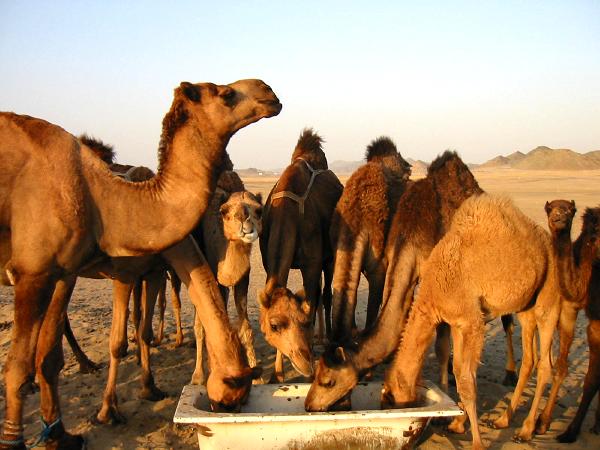
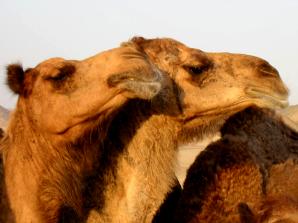
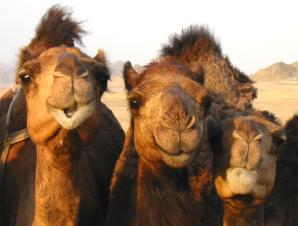
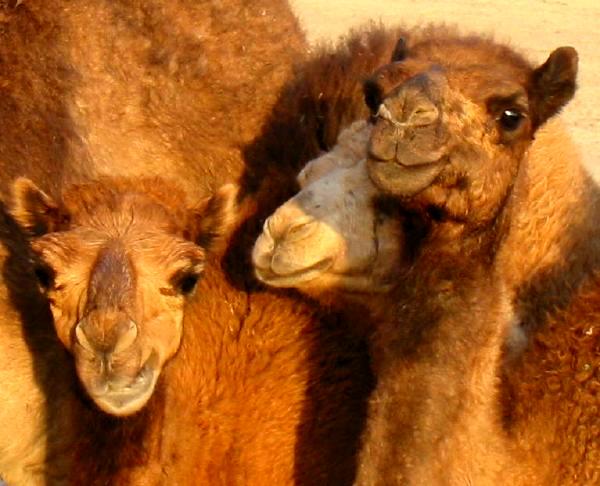
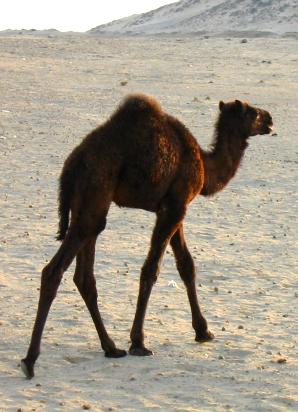
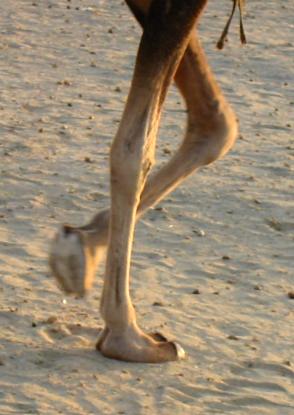
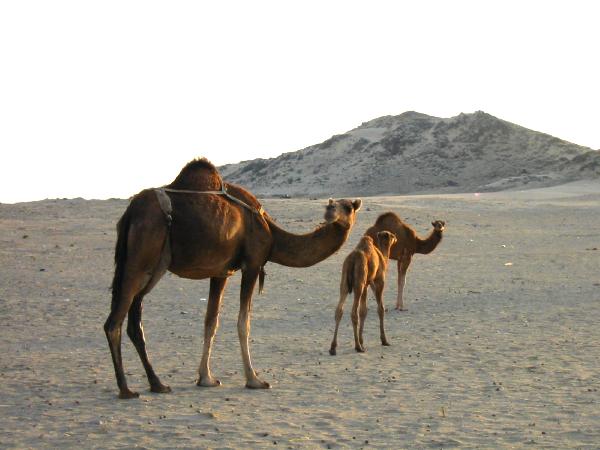
There are also some goats. Again, I don't see what they can find to eat here, but they were obviously munching on something.
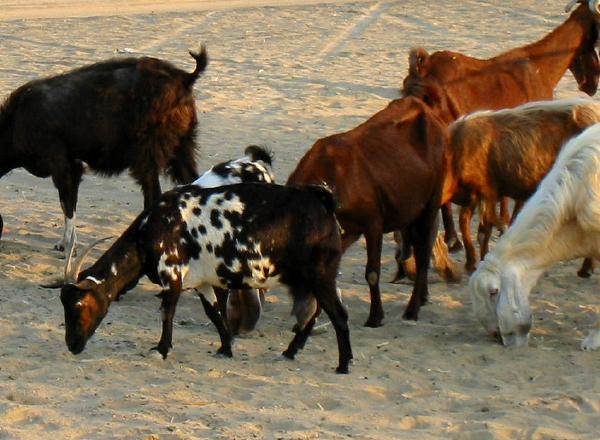
Kamal asked whether I would like to drive, but I though that I had broken enough laws for one day. Also, the dunes were getting a bit steep for my driving habits.
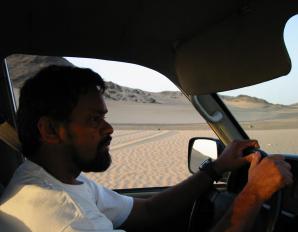
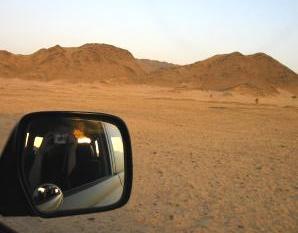
A place where the boys hang out.
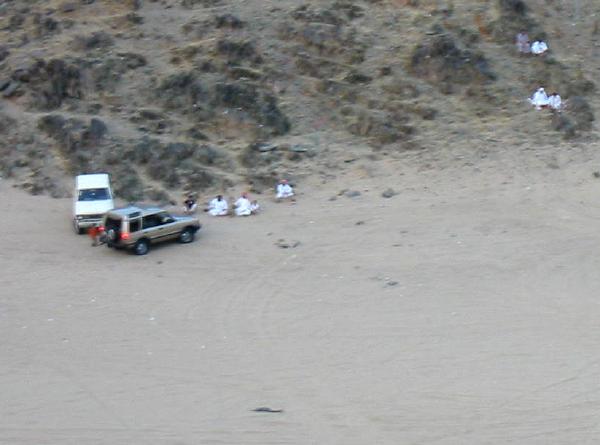
Joy-riding over the dunes.
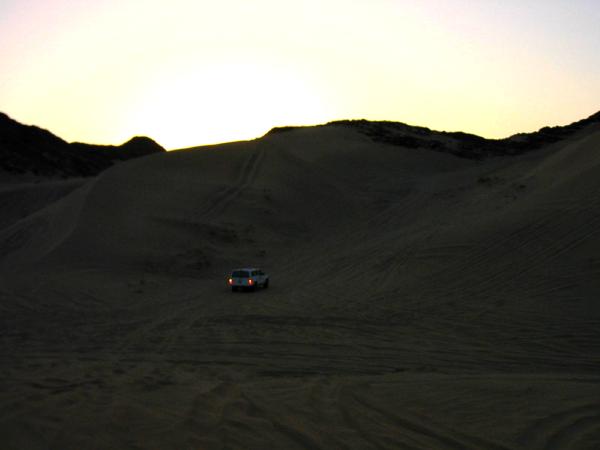
A bit further away.
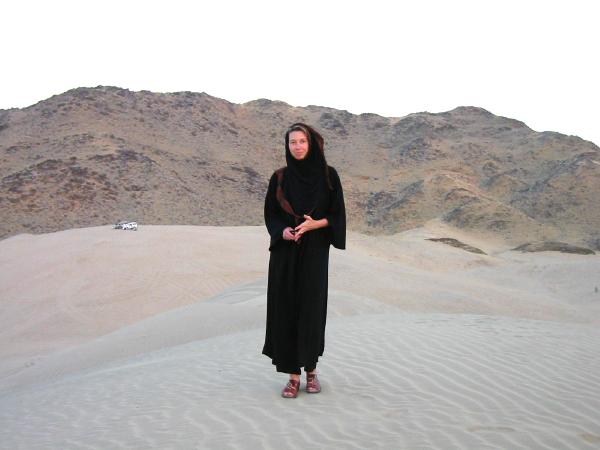
The night is falling over the desert and the cockroach. And we get stuck on a top of a sand dune.
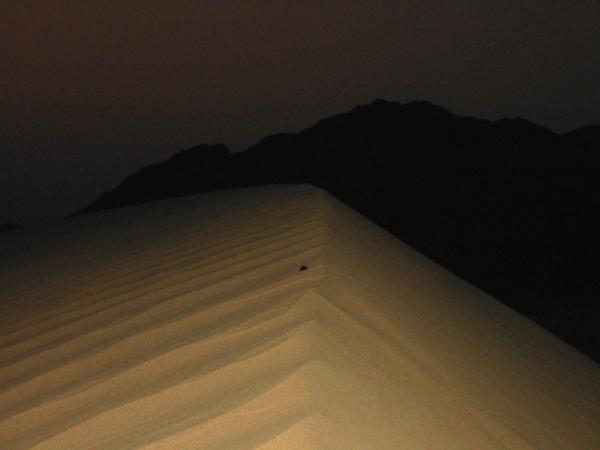
Actually, things got a little too adventurous from here on, for a conventional first trip. We were seriously stuck, so we called, and then waited for some friends of Kamal to come and pull us out. We had a GPS, they had a GPS, we had a 4WD, they had a 4WD, so all was well. The evening was warm and starry, and I didn't mind sitting on a top of a dune, sipping my apple juice, and chatting for 30 minutes or so.
Then some other cars drove past, we shone our lights in their direction and they approached us. They turned their lights on us, and I waived. I though I was being good, with my abaya on and all. But they turned the lights the other way and drove off. Kamal explained that they probably decided not to disturb "family peace". So next time they came back, I sat quietly inside the car.
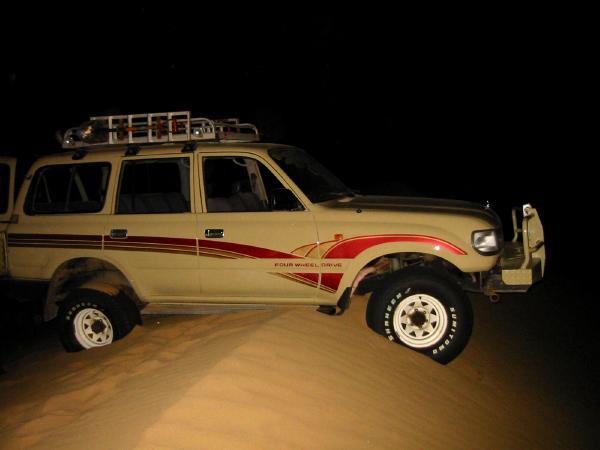
They pulled us out immediately in the first try, and we said our thanks and parked at the bottom the the dune, waiting for the friends who were supposed to come from Jeddah. It took them only another 10 minutes to arrive; by this stage we saw another car blinking as if to signal problems a few kilometres away. We went to help to pull them out.
They were already being rescued by a group of men in white thobes and long beards. I sat in the car, very well behaved this time, with a part of my tarha over my face, with only my eyes showing. Around here, the long beards are often a sign of a conservative Muslim, and sure enough, one of them asked Kamal why his wife isn't properly covered up -- I suppose he saw a bit too much of my forehead, or a strand of my hair.
Anyway, the second car in trouble was pulled out eventually, and we proceeded home. Less than five munites later our friends got stuck. This time it was bad -- all four wheels dug deep into the soft sand, and perched on top of a rock in the middle. We could not even dig them out; they had to be lifted somehow.
The fifteen men in white came to help again. This time they said openly that they found my proximity a bit stressful. Kamal's car was the only one with reflector lights at the roof and needed to be where the action is, so I found myself sitting about 10-15 meters away, on a dune. I listened to them shout, laugh, and call Allah every so often. I was in the middle of the desert with eighteen men, and I hardly knew one of them. Since I am here to tell the tale, and since I am telling it, it obviously ended well, but I have to admit I wasn't sure that it would, at the time.
Well, eventually the third car came off the rock, and there was much thanking to God and we drove off, again. I watched through the back window of the car, as we drove away from the desert and the fifteen bearded men in white. They were lined up for prayer, and the last I saw of them they knelt down on the warm sand and bent forward, with the endless starlit desert sky above them.
New story:
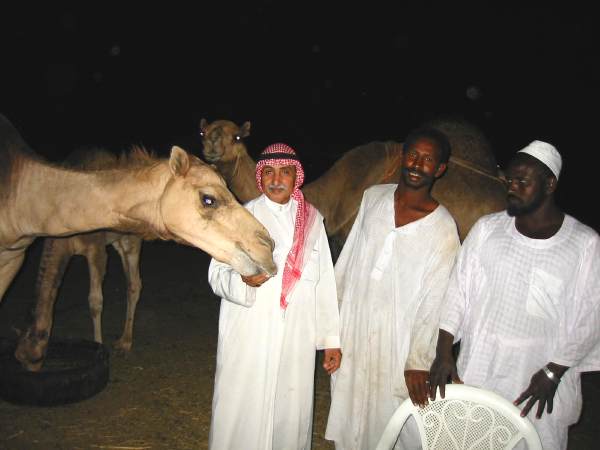
A few days later, I was taken out to another camel place, to taste camel milk. The smell of the place was not unambiguously pleasing, but the experience was more than worth it.
These three men welcomed us, and they were kind to no end. The one with the red head-gear is Saudi, the owner of the camels and of much land. The other two are his shepherds. The camels are often herded by Sudanese people, who are well known for their honesty.
A camel can cost anything from a one to many thousand Saudi Rials (divide by 6 to get UK pounds), but the average price is about three thousand. I asked how many camels a wife is worth, and at first they would not say, but later the number eighty came up. I think that sounds like quite a lot.
The camel on the photo is a three year old female called Tamra. They knew every camel they had by name. Tamra was the favourite, th tamest one, and she had just had her first baby a couple of months ago.
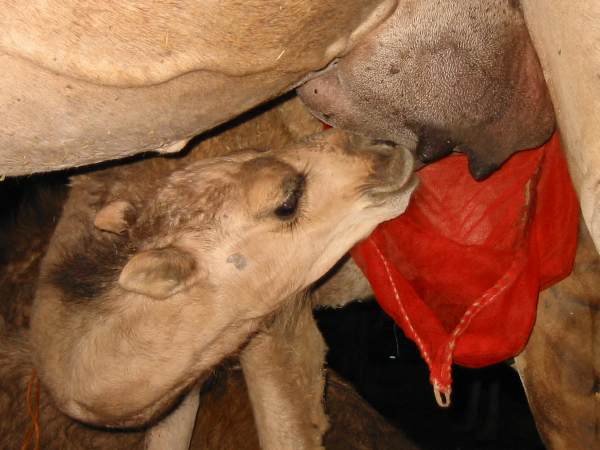
Camels have milk for about a year after giving birth. Tamra's baby was, of course, very successful at extracting it; I was a complete failure. The other camels were already asleep.
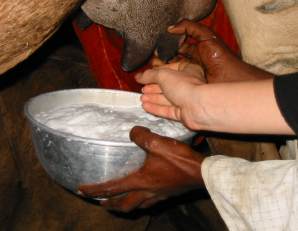
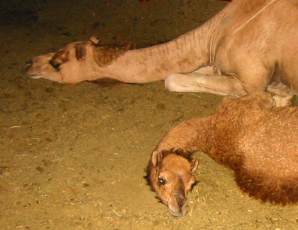
I tasted the milk. It was still warm, thick and salty-sweet, a bit like a goat's milk. It was much thicker than the milk I normally drink (and I don't drink skimmed milk!), but from what I remember of drinking fresh cow milk at my grandmothers house in Yugoslavia, camel milk is less fatty.
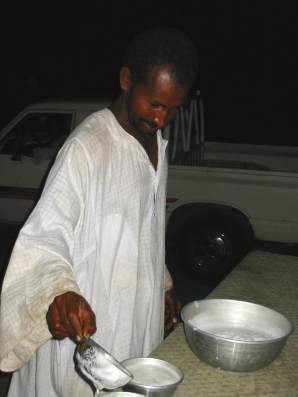
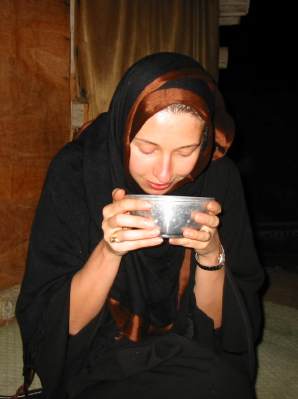
Tamra was cuddly like a kitten. No, more. Her fur is surprisingly soft; also, I did not know that the camels have a stone-hard patch under their chest, and on each "knee", which allows them to lay down on the scorching sand even in the mid-day sun. Tamra was so friendly that some of the "not unambiguously pleasant" smell rubbed off on me, and the people at the party that we visited after this camel-stop considered me with some, hmmmm, polite puzzlement.
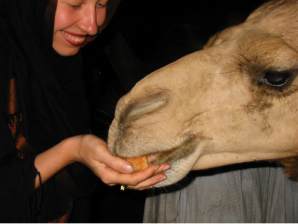
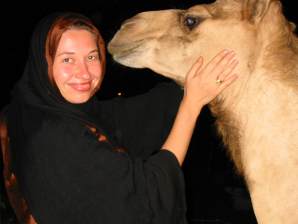
The male camel was less friendly. When they feel stressed, they makes ugly gurgling sounds as a warning, and the least attractive part of his show includes exposure of the skin from below the tongue (I don't know the English word for this). Apparently, male camels do not like women. But this one calmed down in the end, and he allowed us to look at his babies in peace.
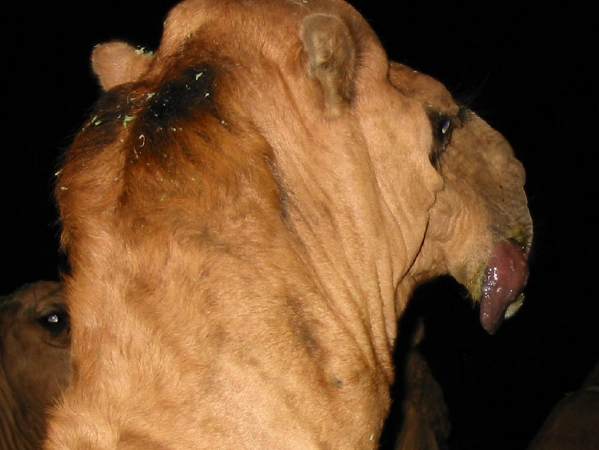
Saying goodbye.
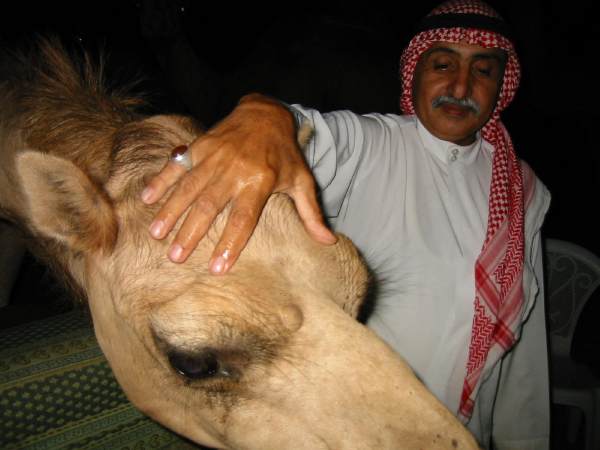





|
page 5 of 12
Silvija Seres, 6 April 2002